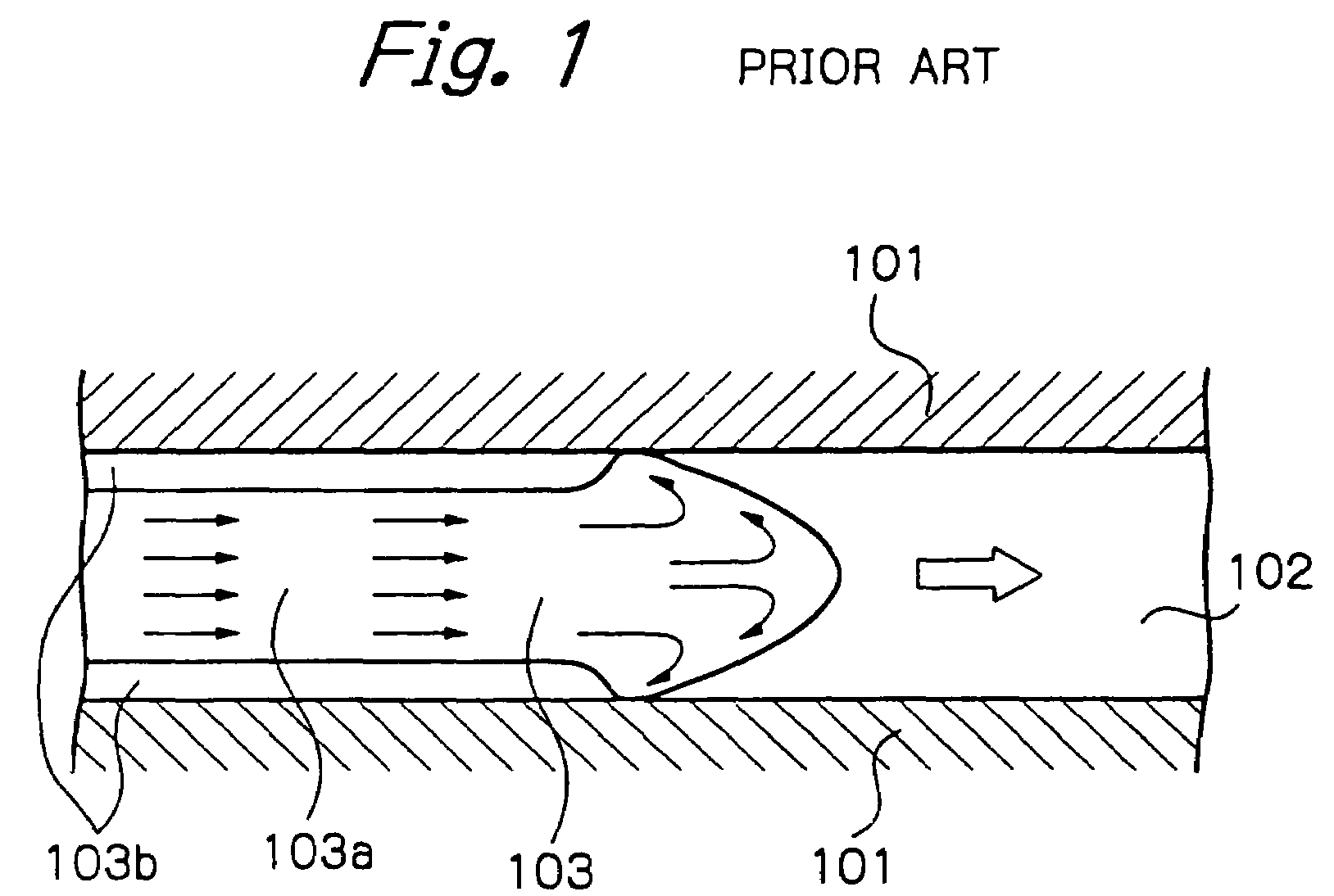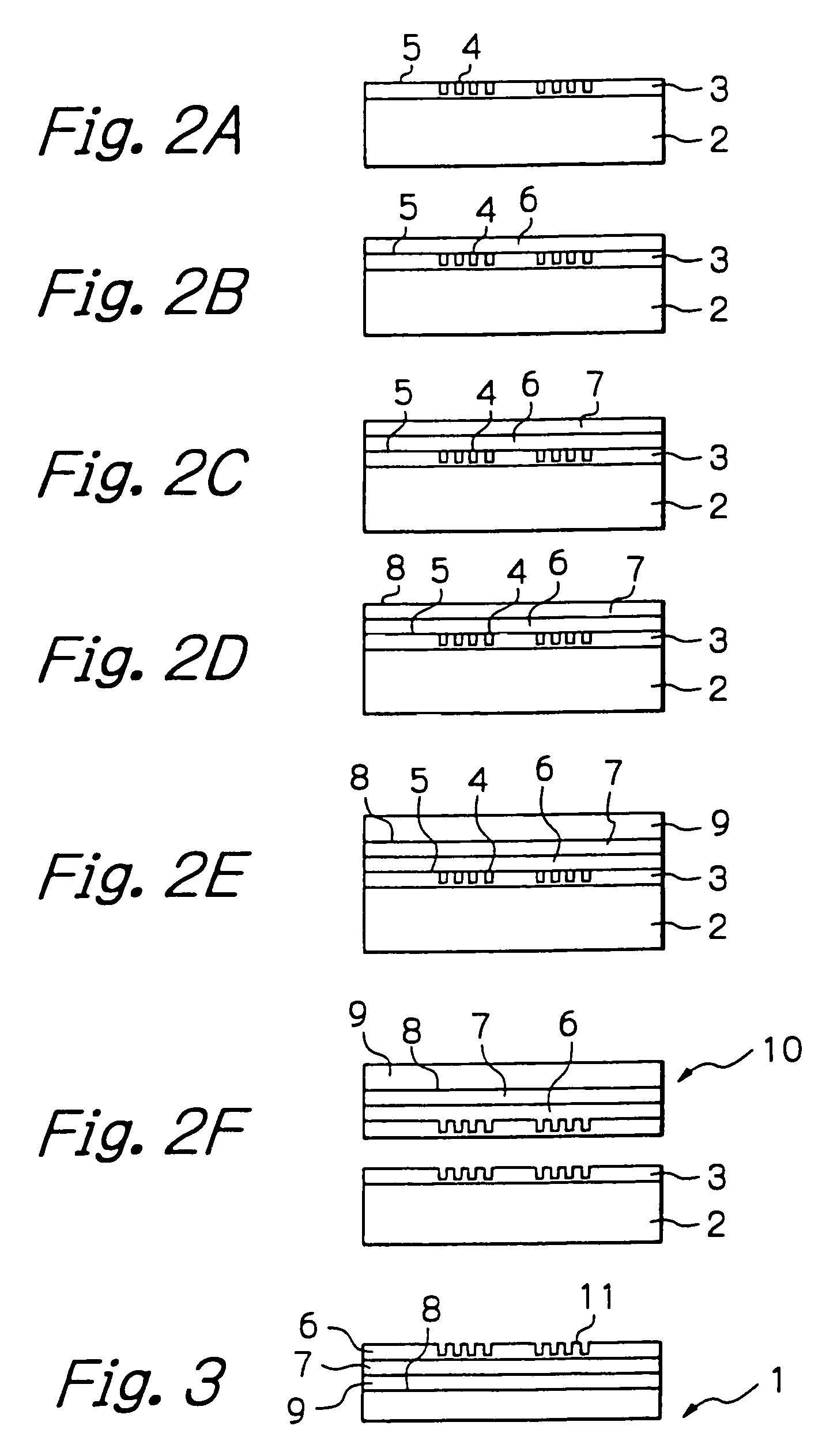Stamper for molding article and method of producing said stamper
a technology of stamping stamping and molding article, which is applied in the field of optical disk, can solve the problems of reducing the yield of optical disks, reducing the transferability of optical disks, and none of the above conventional technologies can enhance the transferability and tact of a disk base molding cycle at a high level, so as to enhance both the transferability and the tact of a disk base molding cycl
- Summary
- Abstract
- Description
- Claims
- Application Information
AI Technical Summary
Benefits of technology
Problems solved by technology
Method used
Image
Examples
1st embodiment
[0036]This embodiment pertains to the production of various kinds of optical disks including a CD, a CD-R, an MD (Mini Disk); an MO (Magnetooptical disk), PD (Phase change optical Disk) and a DVD (Digital Video Disk). In the following description, stampers are classified into a heat-insulated master stamper and a heat-insulated son stamper produced from a master by transfer via a mother. Both of these stampers are used to produce optical disk bases.
[0037]First, a heat-insulated master stamper and a method of producing it will be described with reference to FIGS. 2A-2F and FIG. 3. As shown in FIG. 2A, a photoresist layer 3 is formed on a glass master 2 and then exposed by a laser beam and developed to form a pattern of fine projections and recesses 4 constituting a disk surface pattern. The glass master 2 with the pattern 4 serves as a master. An electroconductive film layer 5 is formed on the pattern 4. Subsequently, as shown in FIG. 2B, Ni electroforming is effected by using the el...
2nd embodiment
[0088]Referring to FIGS. 10A through 10D, an alternative embodiment of the present invention that pertains to the product ion of a stamper will be described. First, how a mother 1 shown in FIG. 10A is formed before the sequence of steps shown in FIGS. 10A through 10D will be described. After an electroconductive film has been formed on a pattern of fine projections and recesses formed on a glass master, an Ni layer is formed by electroforming by using the electroconductive film as a cathode. Then, the glass master is separated to produce a master. After the master has been peeled off, an Ni layer is formed by electroforming and then separated from the master in order to produce the mother 1 having an inverted projection and recess pattern 1a.
[0089]After the mother 1 has been subjected to peeling and film forming like the master (not shown specifically), an about 25 μm thick Ni layer 2a is formed on the mother 1 by electroforming, as shown in FIG. 10A. In FIG. 10A, the reference num...
3rd embodiment
[0108]This embodiment is substantially identical with the first embodiment as to the heat-insulated stamper or son stamper, a method of producing it, an optical disk base, and a method of producing it. The following description will therefore concentrate on differences between this embodiment and the first embodiment.
[0109]As shown in FIG. 11, photoresist is applied to a glass master 2 such that its thickness sequentially increases from the inner circumference toward the outer circumference. Then, the photoresist is exposed to a guide groove pattern by a laser beam over a range of 22.35 mm to 59 mm from the center of the glass base 2. At this instant, as shown in FIG. 12, the relative intensity of the laser beam is sequentially increased from the inner-circumference toward the outer circumference of the glass master 2. After the exposure, the pattern was,developed to form guide grooves shown in FIG. 13A in the glass master 2. As shown, the guide grooves have depths sequentially incr...
PUM
| Property | Measurement | Unit |
|---|---|---|
| thickness | aaaaa | aaaaa |
| thickness | aaaaa | aaaaa |
| thickness | aaaaa | aaaaa |
Abstract
Description
Claims
Application Information
 Login to View More
Login to View More - R&D
- Intellectual Property
- Life Sciences
- Materials
- Tech Scout
- Unparalleled Data Quality
- Higher Quality Content
- 60% Fewer Hallucinations
Browse by: Latest US Patents, China's latest patents, Technical Efficacy Thesaurus, Application Domain, Technology Topic, Popular Technical Reports.
© 2025 PatSnap. All rights reserved.Legal|Privacy policy|Modern Slavery Act Transparency Statement|Sitemap|About US| Contact US: help@patsnap.com



